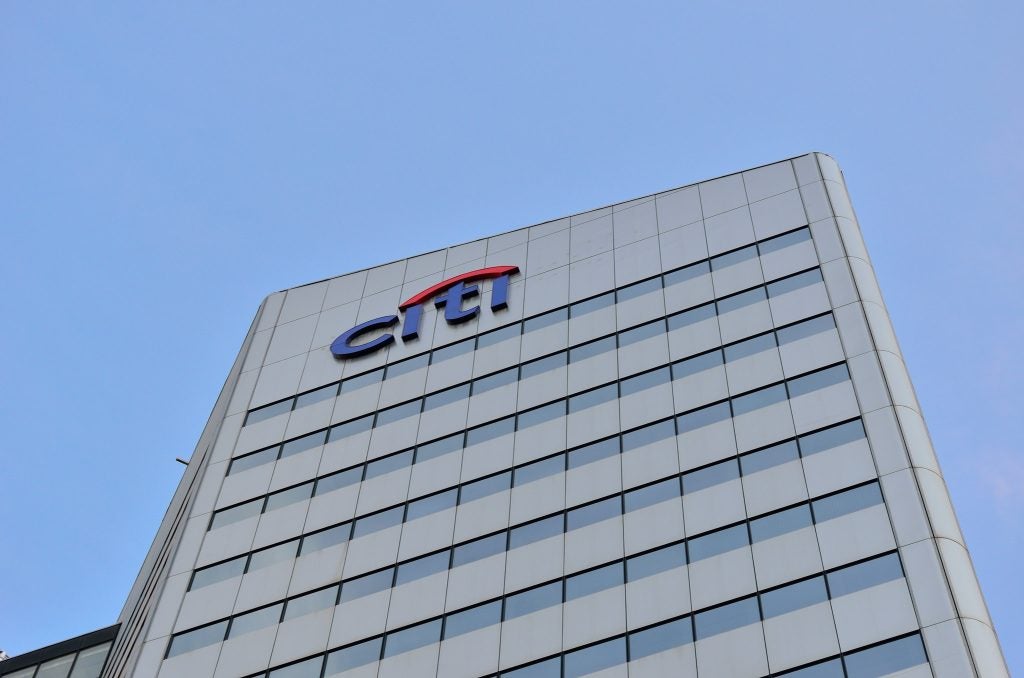US government proposals to cap bank employee pay
at $500,000 per year could make it even trickier for the largest US
wealth managers to hold on to their increasingly flighty brokers.
Charles Davis looks into the retention schemes
they have implemented and which have been most effective.
The travails of wirehouse brokerages have been
well chronicled of late, and the migration of breakaway brokers
leads to the inevitable question of how Wall Street firms can
retain top talent in troubled times.
Indeed, the viability of the wirehouse
model is in open debate these days, as the exodus of advisers is
far greater than anyone realized and is growing by the day,
according to recruiters and the advisers they recruit.
None of the wirehouse firms would discuss
compensations and retention issues for this story – it is simply
too hot a topic and in too much flux right now for them to comment
for the record – but several recruiters and wealth management
consultants discussed the retention plans announced by Merrill
Lynch/Bank of America and Morgan Stanley/Citigroup.
The consensus view is that the other big
wirehouses – Wachovia/Wells Fargo, Smith Barney, UBS, and the like
– might not be able to pull together anything close to BofA’s
retention deal for Merrill brokers, and if they do, it might fall
victim to congressional intervention aimed at capping compensation
for advisers at firms that received federal bailout funds. Once
unthinkable, that regulation is becoming increasingly likely and
could have a huge ripple effect downstream.
Congressional
oversight
How well do you really know your competitors?
Access the most comprehensive Company Profiles on the market, powered by GlobalData. Save hours of research. Gain competitive edge.

Thank you!
Your download email will arrive shortly
Not ready to buy yet? Download a free sample
We are confident about the unique quality of our Company Profiles. However, we want you to make the most beneficial decision for your business, so we offer a free sample that you can download by submitting the below form
By GlobalDataSenator Clair McCaskill of Missouri has
proposed that pay for any employee of a firm receiving federal
bailout assistance be capped at $500,000 a year – the same salary
as President Barack Obama. That would be considered a populist
stunt, were it not for the palpable anger in the streets of
America.
In the face of such political
sensitivities, any compensation plan throwing millions at star
advisers had better be done carefully, and with the certainty of a
public relations backlash at best, and congressional intervention
at worst.
Merrill and Smith Barney both came in
under the wire, and thus have compensation packages in place that
locked in about half of their existing adviser base. Still, as Tim
Welsh, president of Nexus Strategy, a firm that assists brokers in
going independent, says, even a best-case scenario means that tens
of thousands of advisers are on the move.
“There are about 90,000 advisers in the
wirehouse setting, and if half leave, which seems the best case
scenario, that’s 45,000 advisers looking at other opportunities,
whether it’s mid-sized firms, the Schwabs and Fidelitys, or
boutiques, or the RIA channel,” Welsh said. “This kind of thing
just doesn’t happen – ever – and yet that is precisely what is
happening. The exodus is going to be even larger than anyone
believes at the moment.”
Welsh, who says he works with wirehouse
brokers every day who are going the RIA route, predicts that the
wealth management divisions of the wirehouses will survive, but
added that the form of the firm will shift toward open architecture
and independent advice.
“The wealth units of these firms did
pretty well, and they are still doing pretty well overall, but they
are shrinking and changing, and the independent channel in the
United States is just going to be huge,” he said.
Welsh said that the ‘golden handcuffs’
keeping wirehouse brokers in place have come off thanks to the
imploding equities market, and, to make matters even worse, the
current agreements keep senior advisers in place but virtually
ignore the younger “up-and-comers” in the firms.
By contrast to Morgan Stanley’s new
payout, the BofA package favours New York-based Merrill’s
biggest-producing brokers – those who generate more than $1 million
in fees and commissions each year.
Those Merrill representatives who annually
generate $1.75 million in fees and commissions will receive 75
percent of their bonus in a seven-year forgivable loan, and another
25 percent in deferred cash over three years. The next tier of
reps, those who produce $1 million to $1.75 million in fees and
commissions, will get a forgivable loan equal to 75 percent of
their prior year’s book of business.
Brokers who produce less than $500,000
annually will receive incentives that range from nothing for the
lowest producers to a deferred cash bonus of no more than 20
percent over three years.
“I’m hearing from Merrill advisers all the
time,” said Rich Schwarzkopf, a leading industry recruiter and
owner of stockbrokerjobsite.com, a virtual meeting place for the
adviser set. “The brokers feel besieged, and the wealth advisers
particularly feel quite rightly that they have done nothing wrong,
and yet they are the ones taking all the angry calls from investors
all day. Everyone has a breaking point, you know?”
A leaner, more focused
model
Schwarzkopf said that the wirehouse model,
as currently constituted, is going away, to be replaced by much
leaner, more wealth-focused firms.
“These guys know that’s where the money is
to be made, and they’ll keep enough talent from compensation plans
to re-build, but it will be a diminished business, to say the
least,” he added
When one firm buys another, it typically
makes payments to keep young brokers who are increasing their books
of business and are determined to be in the upper 20 percent or 40
percent of their group, known as the “first or second
quintile.”
Those brokers may have four, six or 10
years’ experience and produce between just $300,000 to $500,000 in
fees and commissions annually but could be stars of the future. Now
desperate for revenue, the wirehouses can not make those deals.
“It’s all about revenue now; they need to
show results this quarter, not down the road,” said Welsh. “So
potential stars head down the road, and the Merrills of the world
see their future walk.”
And it is a much easier step to take these
days, Welsh said, noting the existence of his own IATechForum,
which provides break-aways with the tools they need to avoid “being
the guy who has to maintain the copy machine and invest people’s
money.”
Existing independent office models like
Raymond James or Schwab, or quasi-independent models like Wachovia
Profit Formula and Raymond James Advisor Select, take many of the
concerns away, he said.
National Financial Partners, which has
made inroads by buying a percentage of a broker’s practice in
exchange for managing the logistics, are also more appealing than
ever before.
The single most important motivator for
all this movement – and the greatest challenge for wirehouses
trying to retain talent – is the emphasis on stock compensation
when the markets fall so precipitously.
“The golden handcuffs have rusted right
off,” Schwarzkopf said. “The wirehouses really did this to
themselves. For 10 years, they’ve been telling all their advisers,
‘Build a fee-based business.’ And everybody has. And what is that?
It’s a very transferable business.”
Schwarzkopf said that no retention package
can ultimately overcome market inertia.
“Nothing the wirehouses do is their own
anymore, anyway. There are no proprietary products. There is
nothing holding them back and if they built a good fee-based
business, why not go RIA and get a 100 percent payout? The people
who follow the model have just set up for this move, and it was the
industry itself that pushed it so hard.”
The winners, he said, were Charles Schwab,
Fidelity and TD Ameritrade, which have captured near-record amounts
of new assets in recent months from spooked investors.
Schwab, Fidelity, TD the
winners
Most of Ameritrade’s $23 billion of net
new assets this year came from wirehouses, the company said
recently, while Schwab, through its Institutional custodial
business, accumulated $13 billion from former full-service
brokerage firm advisers in 2008, up 41 percent from the previous
year.
The breakaway-broker gain represents about
22 percent of the $60 billion of new assets that all independent
advisers brought to Schwab last year, coming from 123 teams of
brokers who set up as independent registered investment advisers or
who joined existing RIA businesses. That is up from 2007, when
Schwab attracted $9.2 billion from 114 teams of breakaway
brokers.
“Charles Schwab is blowing everybody out,
with over $1.5 trillion in high-net worth assets,” Schwarzkopf
said. “The average new financial consultant at Schwab has $100
million in assets. They’ve got 5,500 reps now. That’s where the big
money is going in wealth management.”
He added: “Some of the best brokers will
move to regionals. Unfortunately there are only about a half a
dozen really big ones, so it’s not going to handle all the
movement. In one year, Stifel increased its head count 30 percent –
and that’s without taking over another firm.”
Wirehouses, meanwhile, will continue to
use hefty pay packages to recruit top brokers from each other,
including upfront payments that can equal or exceed the revenue
they produced in the previous 12 months.
“The dance will go on, but the business
will be shifting underneath their feet,” Welsh said.







